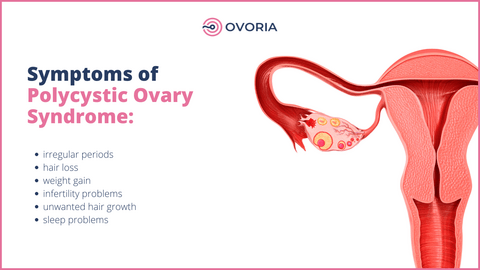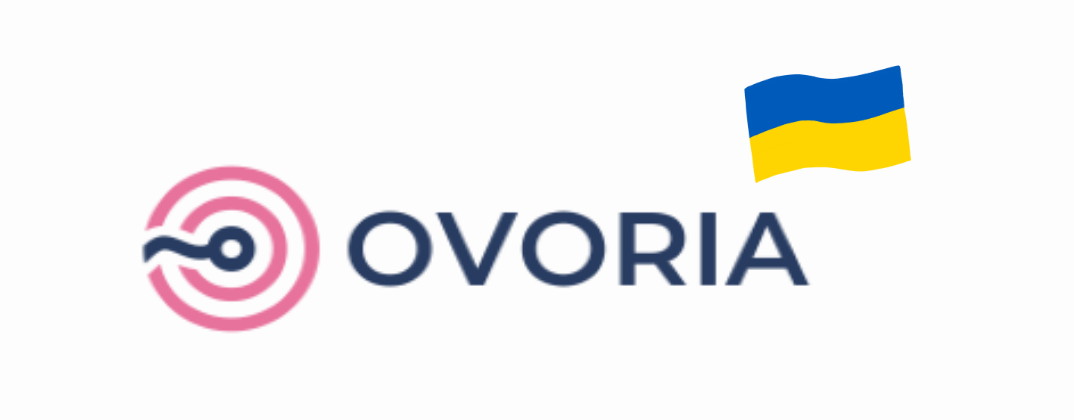Polycystic Ovary Syndrome (PCOS) - Symptoms
Data from WHO show that about 70% of women with PCOS are undiagnosed because they show no PCOS symptoms. Thus, it's unsurprising that many women seek to understand this condition. This article delves into the causes and most common symptoms of polycystic ovary syndrome (PCOS). Moreover, we will discuss some of the treatment options available.

What is Polycystic Ovary Syndrome (PCOS)?
PCOS is a hormonal imbalance problem commonly affecting women of reproductive age. This condition causes swelling of the ovaries with several small external tumours. Also, it disrupts ovulation and can lead to infertility.
Common Symptoms of PCOS
The symptoms of PCOS vary from person to person. They may include:
- Irregular, light, or missed periods
- Weight gain
- Cysts on ovaries or enlarged ovaries
- Oily skin or acne
- Excessive growth of body hair (hirsutism) in areas such as the stomach, chest, and back
- Saggy skin in armpits or neck
- Infertility
- Hair thinning or baldness
- Thick or dark skin patches under breasts, in the armpits, and behind the neck
Sometimes, the symptoms resemble those of other conditions, and it could be challenging to tell. A pelvic examination with a reproductive endocrinologist can help clarify your situation and determine suitable treatment.
Irregular Periods – Or No Periods at All
As mentioned above, PCOS affects ovulation due to hormonal imbalances. As a result, you may experience prolonged, irregular, fewer – less than nine periods a year – or sometimes missed menstruation as a primary symptom.
Hair – Excessive Growth or Thinning/Loss of Hair
Most women with PCOS often experience overproduction of androgen hormones, also known as male hormones. The imbalance may cause male pattern baldness (hair loss of the head) or unwanted body and excess facial hair growth.
Weight Gain
Many women with PCOS experience weight management problems; the hormonal imbalance can trigger abdominal weight gain.
Oily Skin or Acne
The hormonal changes can lead to clogging of hair follicles. Consequently, dead skin cells and sebum (skin's natural moisturising oil) may start plugging out of the pores, causing lesions or oily skin.
Insulin Resistance
Insulin resistance is another common PCOS symptom; hormone fluctuations may result in the body cells improperly responding to insulin. The resistance can cause increased insulin production and risk of type 2 diabetes.
Skin Darkening
Sometimes, you may experience darkened skin in areas like under the breasts, groyne, or neck.
Depression and Mood Swings
The hormonal fluctuations may increase the risk of depression or anxiety, irritability, or mood swings.
Difficulty Conceiving
Infrequent or missed ovulation associated with PCOS may cause challenges in getting pregnant naturally. But having PCOS should not let you give up on your dream of starting your family. A reproductive endocrinologist can help you conceive using assisted reproductive technology (ART) treatment.
PCOS Causes
The exact cause of PCOS is yet to be known. However, there are several factors believed to be contributing to this condition. They include:
- Insulin resistance: when your body can't respond efficiently to insulin, your insulin levels will rise and may interrupt hormonal balance, causing PCOS.
- Genetics: studies suggest that genetics is a potential PCOS cause. Thus, your risk of PCOS increases when a close relative like a sister or mother has the condition.
- Hormonal imbalances: an imbalance in the reproductive hormones, such as elevated androgen levels, plays a part in advancing PCOS.
- Weight: PCOS is associated with being overweight. However, studies are still ongoing to establish the relationship.
PCOS Treatment
Although no cure for PCOS exists, there are various treatment options. The primary goals of PCOS treatment are:
- To regulate hormone levels
- Restore menstrual regularity
- Improve fertility
- Manage symptoms like excess hair growth and acne
- Minimise the risk of long-term health problems like diabetes and cardiovascular diseases
Some of the available PCOS treatments include the following:
- Insulin-sensitising drugs help improve insulin sensitivity, increasing your hormonal and metabolic balance. Thus, they can help regulate menstruation and reduce your risk of type 2 diabetes.
- Medications: your doctor may prescribe birth control pills to regulate menstrual cycles. They also recommend anti-androgen drugs to help limit acne and excessive hair growth.
- Lifestyle changes: Healthy choices can help manage the symptoms and reduce complications. These comprise maintaining a healthy body weight, a balanced diet, managing stress, and exercising regularly.
- Surgical intervention: in case of severe symptoms, a surgical procedure may be necessary to remove ovarian cysts.
- Fertility treatments: the physician may prescribe specific fertility drugs to prompt ovulation and help you get pregnant. They may be oral pills or injectables. If you cannot conceive naturally, the doctor may recommend using assisted reproductive technologies (ART) such as in vitro fertilisation (IVF) with egg donation.
Conclusion
To conclude, polycystic ovary syndrome (PCOS) is a common hormonal problem affecting about 8% to 13% of women of reproductive age globally. This condition disrupts ovulation, causes elevated androgen levels, and can significantly impact fertility.
Some common PCOS symptoms include irregular or missed periods, excessive hair growth or thinning, weight gain, acne or oily skin, and insulin resistance. Although PCOS has no cure, healthy lifestyle choices and early diagnosis can help manage symptoms and prevent the long-term effects of the disorder.
Suitable PCOS treatment may vary depending on the severity of the symptoms and underlying causes. If you experience any of the symptoms mentioned above, consult your fertility healthcare provider. A reproductive endocrinologist can help design a suitable treatment program to improve your quality of life and fulfil your dream of having your baby.
References
- Mukerjee, N. (2020). Polycystic Ovary Syndrome (PCOS) Symptoms, Causes & Treatments-A Review. International Journal of Science and Research, 9(7), 1949-1957. Retrieved from https://www.researchgate.net/publication/343554873_Polycystic_Ovary_Syndrome_PCOS_Symptoms_Causes_Treatments_-A_Review
- Hart, R., Hickey, M., & Franks, S. (2004). Definitions, prevalence and symptoms of polycystic ovaries and polycystic ovary syndrome. Best Practice & Research Clinical Obstetrics & Gynaecology, 18(5), 671-683. Retrieved from https://www.sciencedirect.com/science/article/abs/pii/S1521693404000914
- Lindholm, Å., Andersson, L., Eliasson, M., Bixo, M., & Sundström-Poromaa, I. (2008). Prevalence of symptoms associated with polycystic ovary syndrome. International Journal of Gynecology & Obstetrics, 102(1), 39-43. Retrieved from https://www.sciencedirect.com/science/article/abs/pii/S0020729208000659

